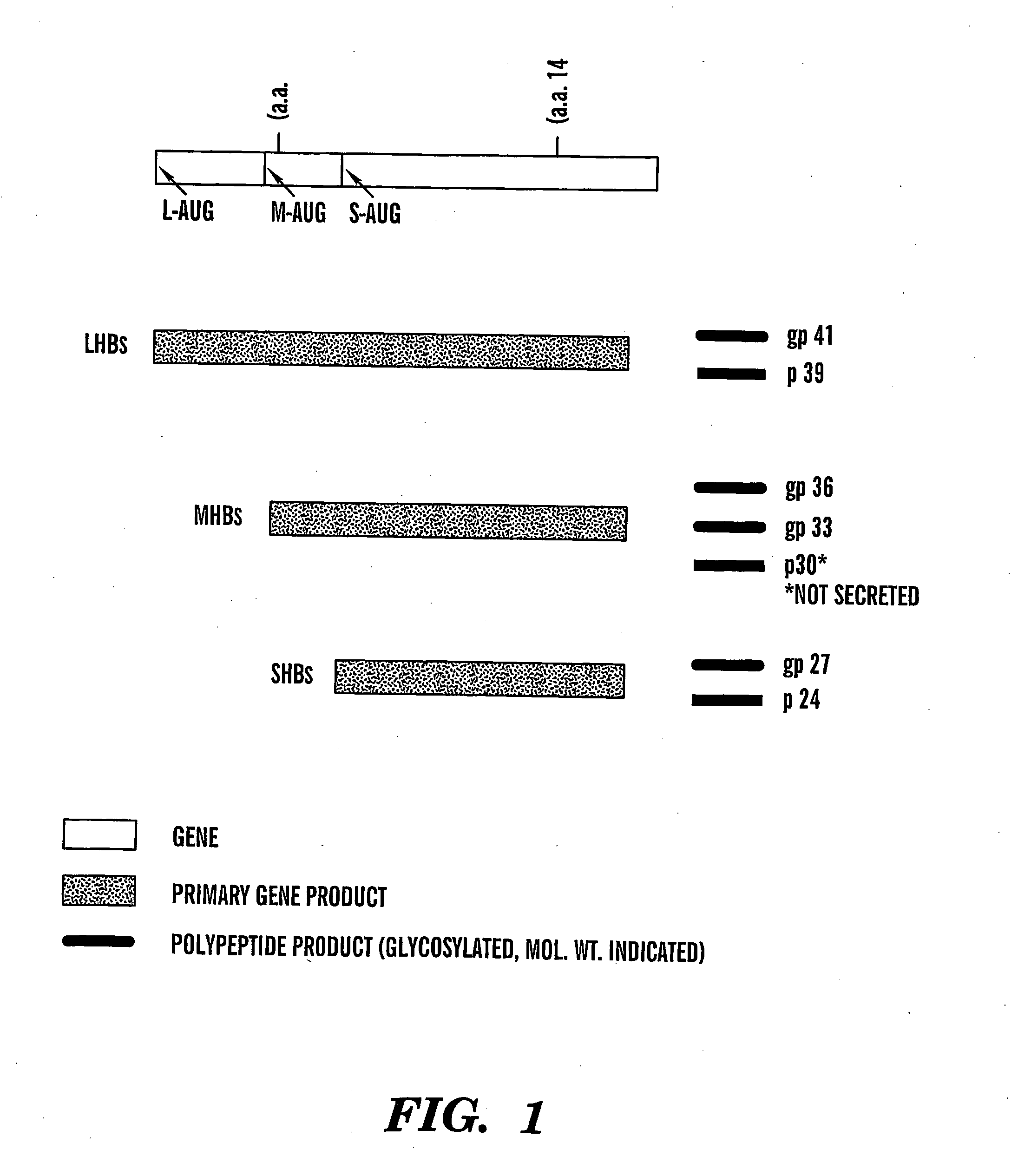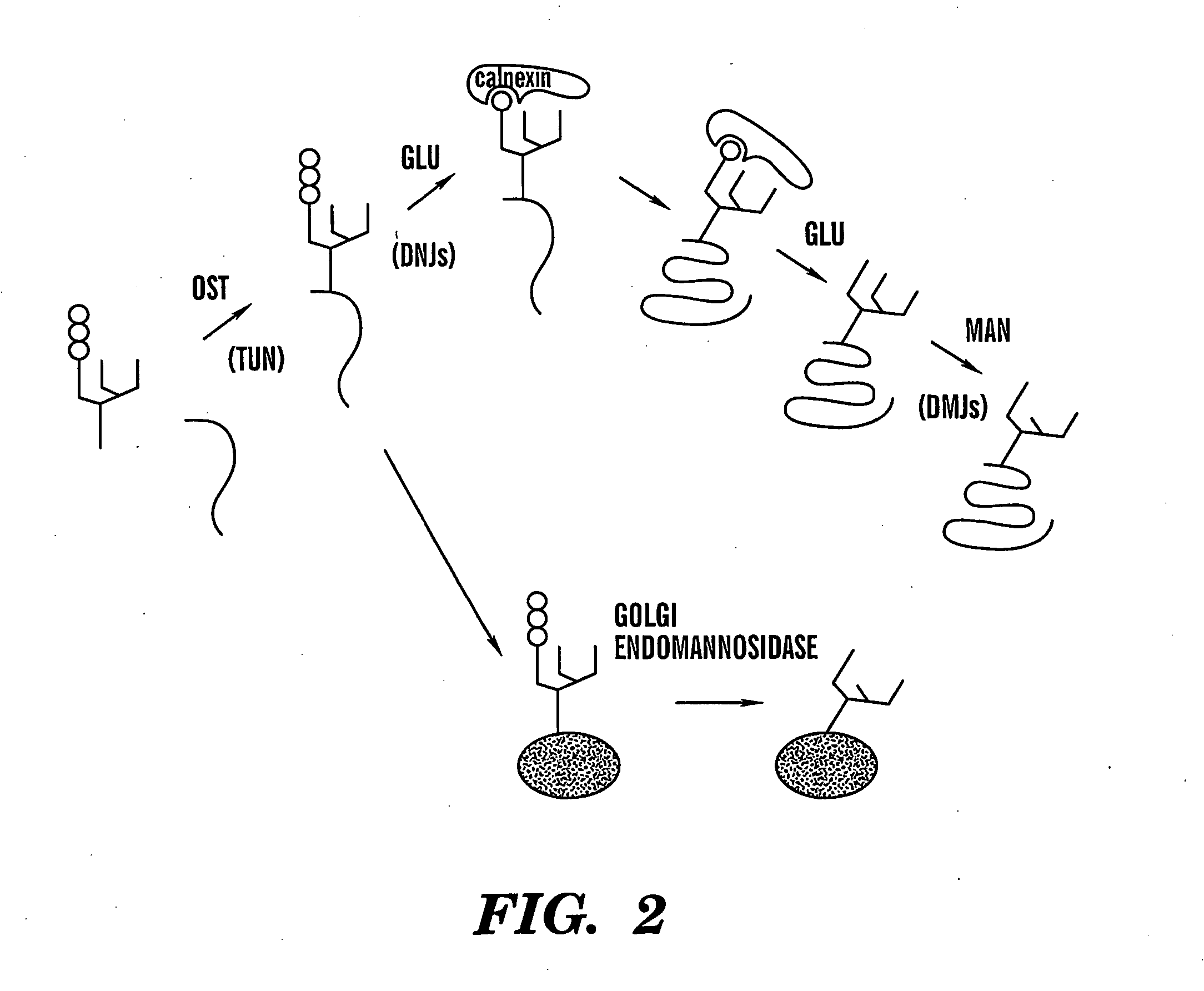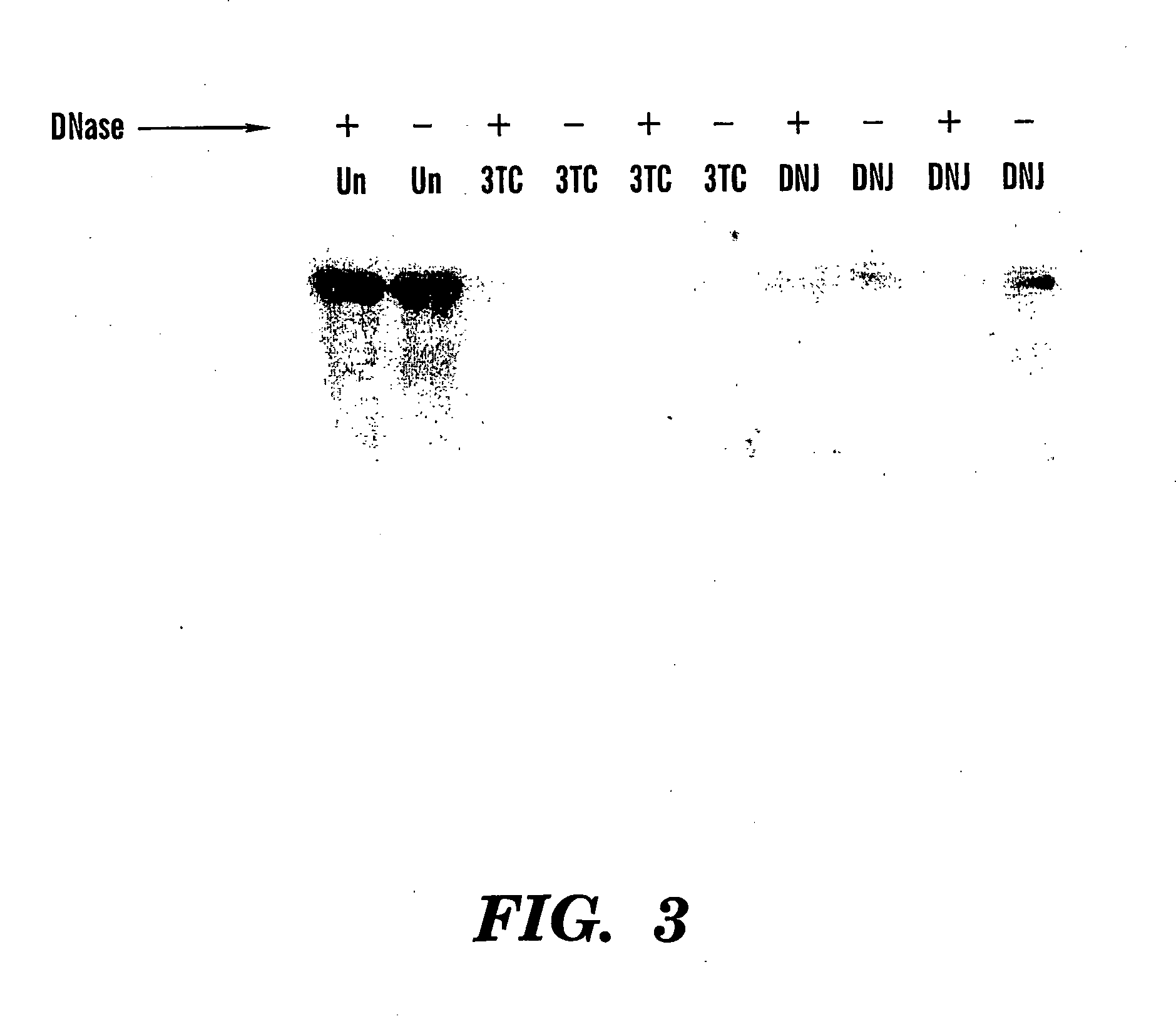Method of treating viral infections
a technology of viral infection and treatment method, which is applied in the field of treatment of viral infections, can solve the problems of 500,000 deaths annually, no definitive cure for chronic hbv infection, and hbv disease remains a major world problem, so as to reduce antigen/glycoprotein secretion, reduce antigenemia, and reduce the effect of antigenemia
- Summary
- Abstract
- Description
- Claims
- Application Information
AI Technical Summary
Benefits of technology
Problems solved by technology
Method used
Image
Examples
example
We have worked extensively on the biology, chemistry and mechanism of action of glucosidase inhibitors. The preliminary evidence provided here is intended to show (a) how glucosidase inhibitors selectively reduce HBV antigen levels secreted from infected cells, (b) demonstrate how the ability of these compounds to cause the accumulation of defective (possibly dominant negative) viral glycoproteins within the treated cell can be exploited for “low dose” therapeutic purposes, (c) demonstrate our advances in chemistry and (d) show how vaccination of woodchucks with WHV sub viral particles can elicit a beneficial immunological response.
Inhibition of the ER a-glucosidases inhibits the secretion of enveloped HBV. The first glycan processing events are the removal of the terminal glucose residues in the ER by α-glucosidase I and II (FIG. 2). The α-glucosidase inhibitor N-butyldeoxynojirimycin (NB-DNJ) has been used to study the role of glucose processing in several proteins including hu...
PUM
| Property | Measurement | Unit |
|---|---|---|
| weight | aaaaa | aaaaa |
| weight | aaaaa | aaaaa |
| weight | aaaaa | aaaaa |
Abstract
Description
Claims
Application Information
 Login to View More
Login to View More - R&D
- Intellectual Property
- Life Sciences
- Materials
- Tech Scout
- Unparalleled Data Quality
- Higher Quality Content
- 60% Fewer Hallucinations
Browse by: Latest US Patents, China's latest patents, Technical Efficacy Thesaurus, Application Domain, Technology Topic, Popular Technical Reports.
© 2025 PatSnap. All rights reserved.Legal|Privacy policy|Modern Slavery Act Transparency Statement|Sitemap|About US| Contact US: help@patsnap.com



